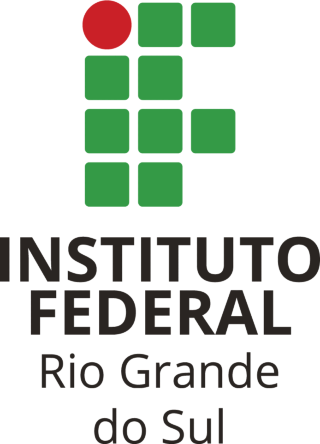Influência do gesso agrícola e fertilizantes fosfatados na produtividade de milho (Zea mays) em segunda safra e safra
| Title: | Influência do gesso agrícola e fertilizantes fosfatados na produtividade de milho (Zea mays) em segunda safra e safra |
| Author: | Mai, Adriel |
| Abstract: |
A agricultura tem buscado cada vez mais aprimorar e maximizar o uso dos recursos disponíveis para produção, através da melhoria do perfil do solo. Nesse contexto, o uso do gesso agrícola tem se demonstrado eficiente em grande parte das áreas com presença de alumínio tóxico (Al3+) em profundidade no perfil do solo. Além disso, o uso de fertilizantes fosfatados que forneçam cálcio (Ca) e enxofre (S) podem proporcionar um melhor ambiente para crescimento ao longo do perfil do solo, diminuindo a atividade do Al3+ e maximizando o aproveitamento de água e nutrientes pela planta. Devido ao exposto, este trabalho tem por objetivo verificar a influência do uso do gesso agrícola como condicionante de solo, para produção de milho em safra e segunda safra, além de verificar o potencial de condicionamento do solo de adubos fosfatados, através do fornecimento de Ca e S. O experimento foi realizado em dois momentos, na segunda safra de milho de 2022 e na safra de milho 2022/23, no município de Tapera – RS, sob Latossolo Vermelho, com alta saturação de bases e baixo teor de Al3+ nas camadas de 0-20 cm e 20-40 cm. O delineamento experimental foi em blocos ao acaso, com quatro repetições, constando de sete tratamentos, um deles tratamento controle sem uso de gesso, somente com superfosfato simples T1 (0+SFS), e seis de gesso combinados com aplicação de superfosfato triplo (SFT), com doses (kg.ha-1 ) de: T2 (0+STF), T3 (500+SFT), T4 (1000+SFT), T5 (2000+SFT), T6 (4000+SFT) e T7 (8000+SFT). Na segunda safra, com maiores precipitações, o gesso se mostrou prejudicial, efeito ligado especialmente a deficiência induzida de magnésio (Mg2+), provocado pelo uso do insumo em perfil de solo já corrigido, neste caso, o T2 apresentou a melhor produtividade (5466,5 kg.ha-1 ), enquanto o T6 teve a menor média (4676 kg.ha-1 ). Na safra 2022/23, doses intermediárias de gesso tiveram efeito positivo na produtividade da cultura do milho, o T2 teve a menor média (5523,7 kg.ha-1 ) enquanto o melhor resultado (6503,2 kg.ha- 1 ) foi obtido com o T4. O uso de fertilizantes fosfatados foi ineficiente para produzir os mesmos efeitos que o uso de gesso. Desta forma, o gesso é um insumo interessante para buscar melhoria do perfil de solo, porém seu uso deve ser cauteloso, pois pode provocar tanto efeitos positivos como efeitos negativos de lixiviação. Agriculture has increasingly sought to improve and maximize the use of available resources for production, by improving the soil profile. In this context, the use of agricultural gypsum has proven to be efficient in most areas with the presence of toxic aluminum (Al3+) deep in the soil profile. In addition, the use of phosphate fertilizers that provide calcium (Ca) and sulfur (S) can provide a better environment for growth along the soil profile, decreasing Al3+ activity and maximizing the use of water and nutrients by the plant. Due to the above, this work aims to verify the influence of the use of agricultural gypsum as a soil conditioner, for the production of corn in season and second crop, in addition to verifying the potential of soil conditioning of phosphate fertilizers, through the supply of Ca and S. The experiment was carried out in two moments, in the second corn harvest 2022 and in the corn harvest 2022/23, in the municipality of Tapera - RS, under Red Latosol, with high base saturation and low Al3+ content in the soil layers. 0-20 cm and 20-40 cm. The experimental design was in randomized blocks, with four replications, consisting of seven treatments, one of them a control treatment without the use of gypsum, only with simple superphosphate T1 (0+SFS), and six of gypsum combined with the application of triple superphosphate (SFT), with doses (kg.ha-1 ): T2 (0+SFT), T3 (500+SFT), T4 (1000+SFT), T5 (2000+SFT), T6 (4000+SFT) and T7 (8000 +SFT). In the second season, with greater precipitation, gypsum proved to be harmful, an effect linked especially to the induced deficiency of magnesium (Mg2+), caused by the use of the input in a soil profile already corrected, in this case, T2 presented the best productivity (5466, 5 kg.ha-1 ), while T6 had the lowest average (4676 kg.ha-1 ). In the 2022/23 season, intermediate doses of gypsum had a positive effect on the productivity of the corn crop, T2 had the lowest average (5523.7 kg.ha-1 ) while the best result (6503.2 kg.ha-1 ) was obtained with T4. The use of phosphate fertilizers was inefficient to produce the same effects as the use of gypsum. In this way, gypsum is an interesting input to improve the soil profile, but its use must be cautious, as it can cause both positive and negative leaching effects. |
| URI: | https://dspace.ifrs.edu.br/xmlui/handle/123456789/1297 |
| Date: | 2023 |
Files in this item
| Files | Size | Format | View | Description |
|---|---|---|---|---|
| 1234567891297.pdf | 2.800Mb |
View/ |
Texto completo |



